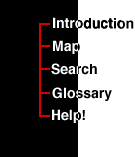

|
 |
An introduction to simplicial quantum gravityWe know today that Newtonian physics is really only an approximation that works well in almost every situation that we encounter in everyday life. We can use these rules to describe exactly how a baseball will travel when thrown. We know how to use Newton's laws so well that we can launch a rocket, and give it exactly the right amount of thrust so that it can coast to Jupiter, a planet only 90,000 miles across, but millions of miles distant from earth and orbiting at 30,000 miles per hour. This approximation is not good enough in some situations. If I want to describe the behavior of things on a very small scale, such as the motion of an electron around an atom, I cannot use the same Newtonian rules that I use to describe the motion of a baseball thrown across the infield. For really small-scale physics, I must use a new set of rules proposed in the early 1900's. These rules are called quantum mechanics.
Now, both quantum mechanics and the theory of relativity still accurately describe the motion of our baseball, but Newton's rules of mechanics and gravity work so well in this situation that we would never bother using these far more more cumbersome theories in such a case. Below is a chart showing when these three theories, Newtonian physics, quantum mechanics, and relativity may safely be applied.
Note, that there is still a square on the chart that is not covered by ANY of the theories that we've mentioned so far. This means that even quantum mechanics and relativity are in a sense approximations that fail when we want to predict very small scale phenomena in the vicinity of very large masses. This will someday be the domain of a theory of quantum gravity. To find out what we require from such a theory, lets first briefly examine what quantum mechanics and relativity tell us.
Now, lets see how Quantum Mechanics and Relativity might be mixed to form a theory of Quantum Gravity.
|
|
|